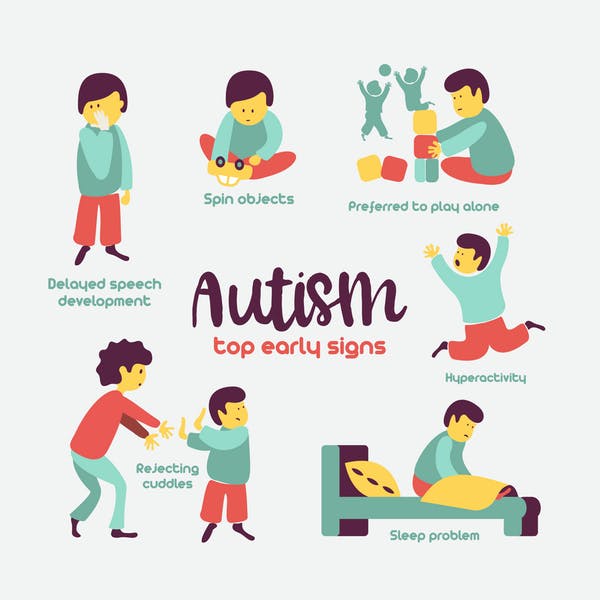Maria had looked forward to shifting from teaching to becoming the director of the preschool. But right now she was having some serious second thoughts about her move to management.
She had just gotten off the phone with Ms. Otero, the very angry mother of a 4-year-old boy, Jeremy. Jeremy had an emotional behavioral disability and had an individualized educational program. Jeremy wasn’t the only preschooler with a disability at the school and Maria was proud that her school included children with disabilities. But Jeremy was a handful.
It was just November and today was the fourth time Maria had called Ms. Otero to come get him because of his misbehavior. Ms. Otero said this was the last time that she would come and take Jeremy home. Jeremy had already missed 10 days of school and she was pretty sure his so-called misbehavior was a manifestation of his disability.
Ms. Otero said that the Individuals with Disabilities Education Act required that the school figure out a plan to deal with Jeremy’s behavior some other way than just sending him home. Before hanging up, Ms. Otero said this wasn’t fair and the school was punishing her son for having a disability.
Maria knew there were specific rules regarding disciplining students with disabilities under the Individuals with Disabilities Education Act and had heard the term manifestation determination. But she thought that only applied to children from kindergarten through high school; not children who were only 3 or 4 years old and still in preschool. Not so.
IDEA Covers Preschool Too
The Individuals with Disabilities Education Act (IDEA) provides that all children with disabilities from age 3 to 21 have a right to a free appropriate public education, including children who are suspended or expelled. So the IDEA covers children with disabilities receiving a public education in preschool.
The IDEA specifies procedures for school administrators to follow when disciplining children with disabilities. These procedures balance the need to keep schools safe with the right of children with disabilities to receive a public education.
There is a process to determine if a student’s misconduct is a manifestation of the student’s disability, and prevents children from being punished for “misbehavior” that is related to the child’s disability. Unfortunately, the IDEA’s procedures can be confusing. Here are some questions and answers regarding the manifestation determination process that should make the process clearer.
Who determines if the behavior is the “manifestation of a disability”?
The manifestation determination is made by a group that includes the child’s parent and the relevant members of the child’s Individualized Educational Program (IEP) team. The parent and school administrators decide which IEP team members will be included in the meeting.
When must a manifestation determination be made?
Whenever the school decides to remove or suspend a student with a disability from the student’s educational placement for more than 10 school days.
How does the group decide if the student’s misconduct is a manifestation of the student’s disability?
First, the group will review all of the relevant information in the student’s file including any information included from the IEP, teacher observations and information provided by the student’s parents. Based on that review, the group will determine whether:
- The student’s misconduct was caused by or was directly or substantially related to the student’s disability; or
- The misconduct was the direct result of the school district not implementing the student’s IEP.
If the group determines that the misconduct was related to the student’s disability or was the direct result of the IEP not being implemented, then the team will determine that the misconduct was a manifestation of the student’s disability.
If the student knows right from wrong and understands it is wrong to violate the student code of conduct, doesn’t that mean his misconduct was not a manifestation of their disability?
No, the student may know his behavior is wrong but the misconduct might still be directly related to his disability. For example, the student’s disability may limit his ability to control the behavior. Or, perhaps IEP services, such as counseling, were never provided, causing the student’s behavior to escalate beyond the student’s control.
What happens if the student’s misconduct is determined to be a manifestation of the student’s disability?
The student’s IEP team will meet and unless there are special circumstances or the IEP team changes the student’s educational placement, the student will return to the school program she was in before the suspension.
The IEP team will also conduct a Functional Behavioral Assessment and will implement a behavior intervention plan for the student. A Functional Behavior Assessment gathers information about the student’s behavior to determine what function the student’s behavior serves for the student. The behavior intervention plan is the plan to provide support to the student to intervene with the behavior.
What are special circumstances?
In disciplinary situations involving possession of weapons, illegal drugs or a serious injury caused by the student, the school may remove the student for up to 45 school days, even if the misconduct is a manifestation of the student’s disability. The student must receive appropriate educational services after the first 10 school days that the student is removed.
What if the group determines that the misconduct is not a manifestation of the student’s disability?
If the student’s misconduct is not a manifestation of the student’s disability, then the student may be disciplined the same as a student without a disability. But if expelled, the student is still entitled to receive a free appropriate public education.
In many cases the student’s behavior is determined to be a manifestation of the student’s disability. But parents have the right to appeal a decision that their child’s behavior is not related to their child’s disability. Hearings to resolve disagreements in the disciplinary process are expedited. That means the hearing must be held within 20 school days after it is requested and the decision must be made within 10 school days after the hearing is completed.
The IDEA’s specific procedures for disciplining children with disabilities in the public school system protect their right to a free appropriate public education, including children ages 3 and 4 who are placed in preschool.
Granted, these procedures can be confusing, but understanding them will help ensure that all children receive appropriate school services.
Randy Chapman is the author of three books, including The Everyday Guide to Special Education Law (The Legal Center for People with Disabilities, $24.95). http://randychapman.wordpress.com






